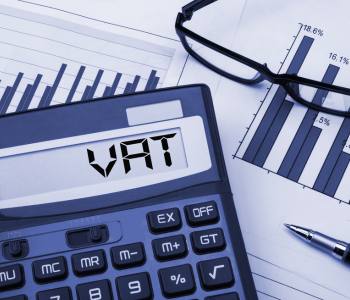QuickBooks Online GCC VAT Setup: The 2025 Step-by-Step Guide
More Gulf SMEs are ditching spreadsheets for QuickBooks Online (QBO), but many stumble on the very first hurdle: getting VAT codes and reports to match GCC rules. If you operate in the UAE, Saudi Arabia, Bahrain, or Oman, the default “VAT/GST” settings won’t cut it.
This guide walks you through a straight-from-dashboard setup that takes about 60 minutes—and prevents headaches at return time.
1. Prerequisites Before You Start
| Item |
Why It Matters |
| Valid TRN |
QBO prints this on invoices and fetches the correct VAT return form. |
| Correct Home Currency |
Set to AED, SAR, BHD, OMR, etc. before enabling multi-currency. |
| Chart of Accounts Clean-up |
Duplicate revenue accounts confuse VAT codes. Merge first. |
| Access Level |
You must be Primary Admin or Company Admin to turn on VAT. |
Tip: SMEs with turnover < OMR 1 million can still qualify if they hold a formal industrial licence.
2. Turn On VAT in QBO (GCC Region)
QBO Global version now supports GCC VAT natively as of the April 2025 release.
- Settings ⚙️ → Taxes → Set up Tax
- Choose “VAT” (not Sales Tax).
- Select Country (UAE, Saudi Arabia, Bahrain, Oman).
- Enter your Tax Registration Number (TRN).
- Select Reporting Frequency (Monthly or Quarterly).
- Click Save—QBO auto-creates GCC-compliant tax codes:
- 5 % (Standard Rated)
- 0 % (Zero-Rated)
- Exempt
- Reverse-Charge (for imports & services)
3. Map VAT Codes to Accounts
| Code |
When to Use |
Default QBO Account |
| 5 % SR |
Domestic sales and purchases subject to standard rate |
VAT Payable |
| 0 % ZR |
Exports outside GCC, certain food & health-care |
VAT Payable |
| Exempt |
Residential rent, life insurance, etc. |
VAT Payable |
| RC IMPORTS |
Import of goods & services (reverse-charge) |
VAT Payable |
Tip: Rename codes to “5 % SR UAE” or “RC-KSA” if you operate multiple GCC entities.
4. Enable Multi-Currency (If Needed)
- Settings → Account & Settings → Advanced → Currency
- Turn on Multi-currency (irreversible).
- Add customer currency (USD, EUR).
- QBO tracks FX gain/loss and converts VAT at Central Bank daily rates.
5. Set Up Reverse-Charge for Imports
- Create a Bill from the overseas supplier.
- Apply RC IMPORTS code on each line.
- QBO posts VAT on both purchase and sales side—netting to zero but reporting in Box 3/14 (UAE example).
For Customs-cleared imports, record the
VAT Payment against “Payable to FTA” when settling the SAR/ AED e-Dirham.
6. Generate and Review the VAT Return
- Taxes → VAT → Prepare return
- Review Box 1–14 (UAE) or KSA Return boxes pre-filled.
- Export to Excel for reconciliation.
- File through FTA/ZATCA portal; attach XML if required.
7. Four Common Setup Mistakes (and Fixes)
| Mistake |
Fix |
| Using GST (7 %) template |
Always pick VAT—GCC codes auto-load. |
| Reverse-charge flagged as 0 % |
Use RC IMPORTS code; don’t label as 0 %. |
| No multi-currency before first USD invoice |
Enable before posting; otherwise edit all historic transactions |
| Wrong TRN on invoices |
Keep BOMs, production logs, and scrap reports for 5 years. |
8. 2025 Compliance Checklist
- VAT feature enabled & TRN verified.
- Standard, zero-rate, exempt, RC codes mapped.
- Multi-currency enabled (if needed).
- Sample VAT return matches trial balance totals.
- Backup taken weekly via QBO “Company Backup” app.
How INDGenius Accounting Helps GCC QBO Users
- One-time VAT setup—codes, chart of accounts, and test filing.
- Monthly reconciliation—import vs. customs, RC services.
- Quarterly VAT return—prep, review, file, and payment reminder.


